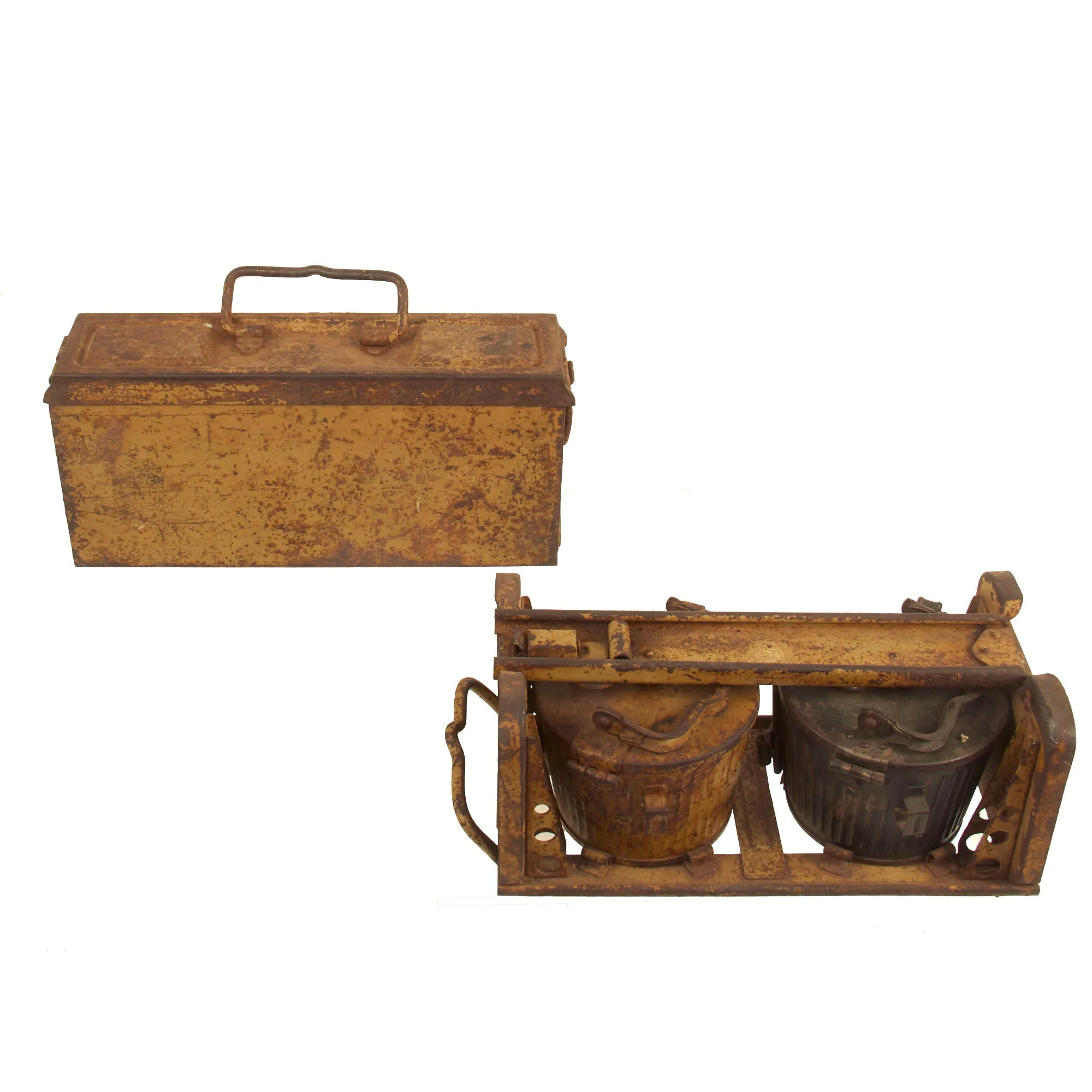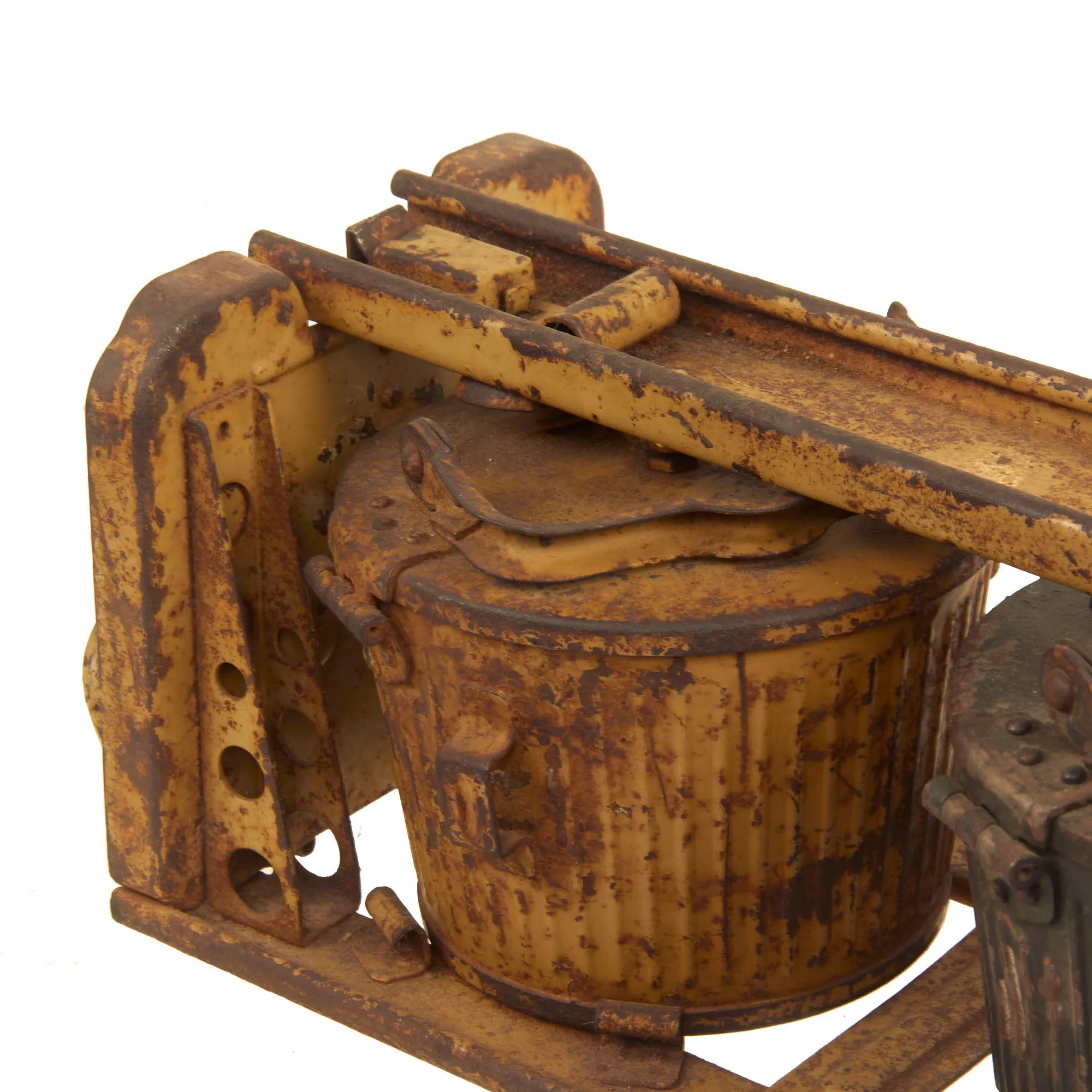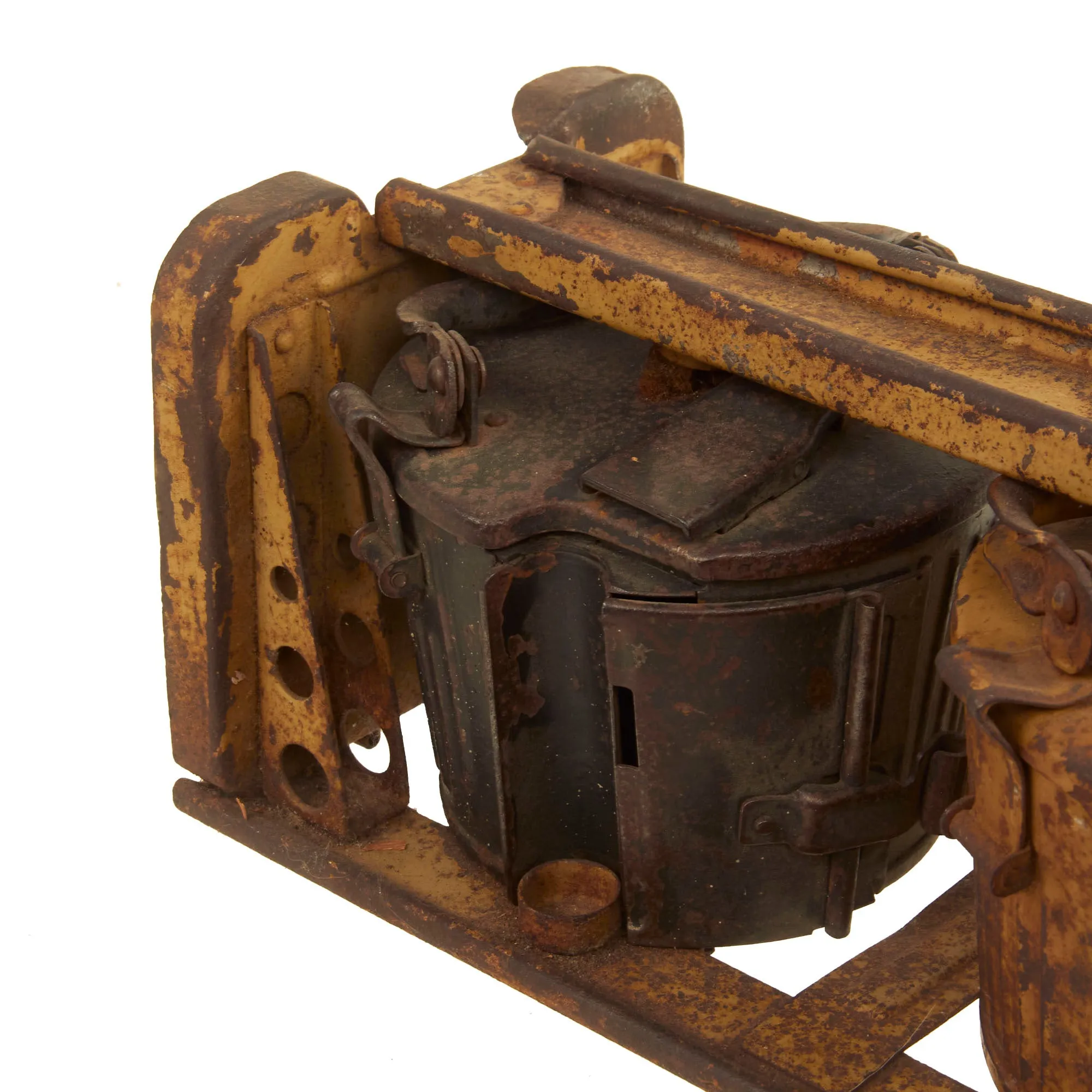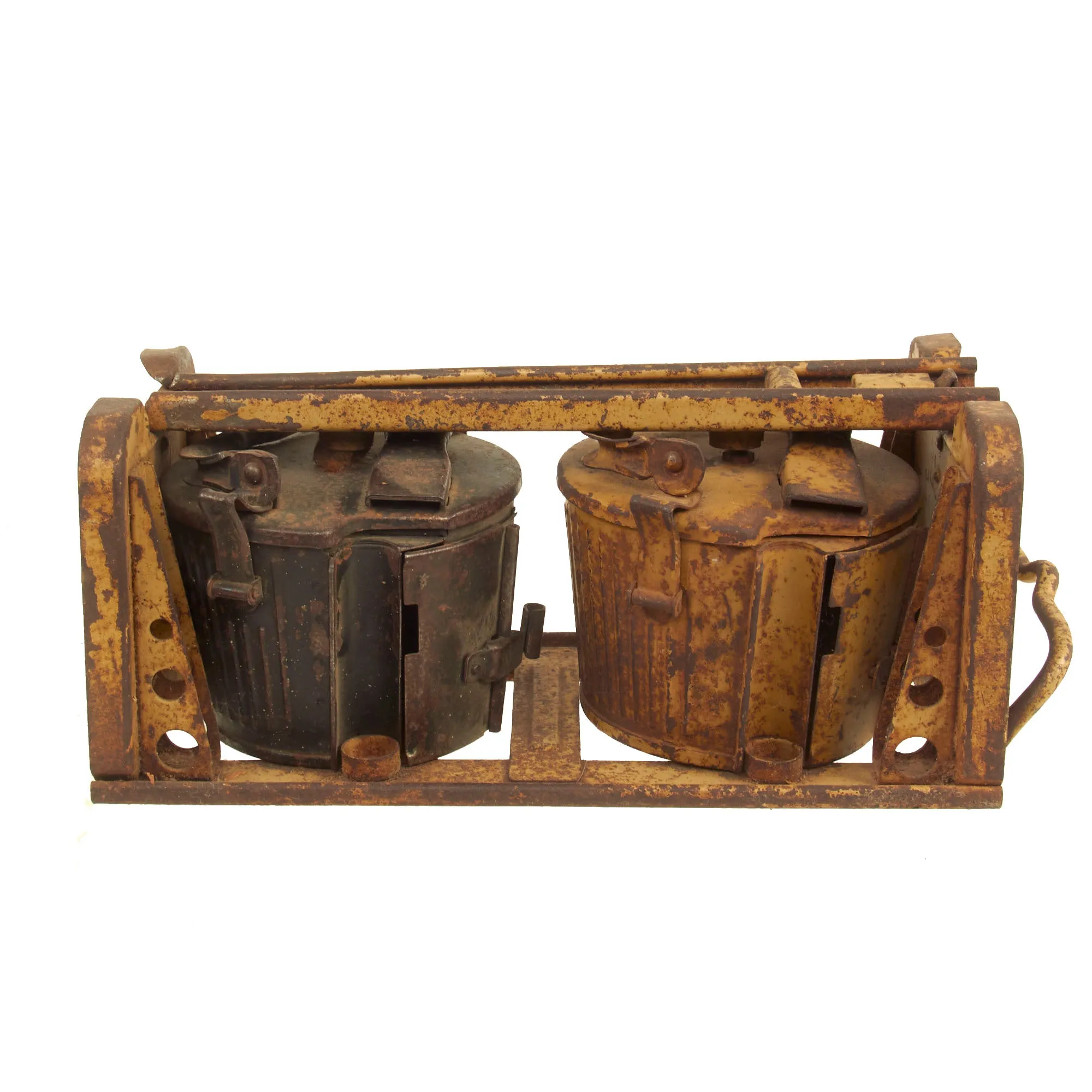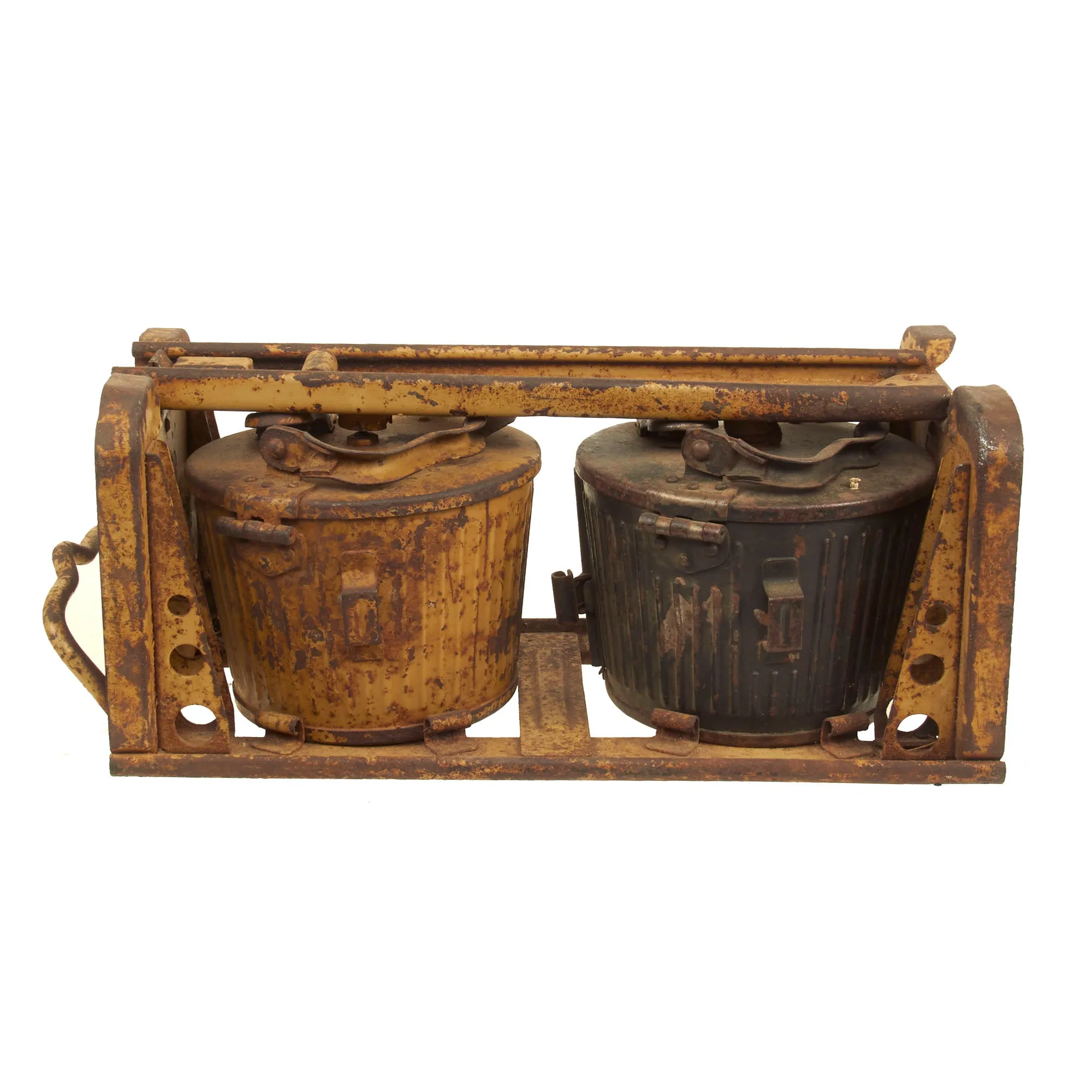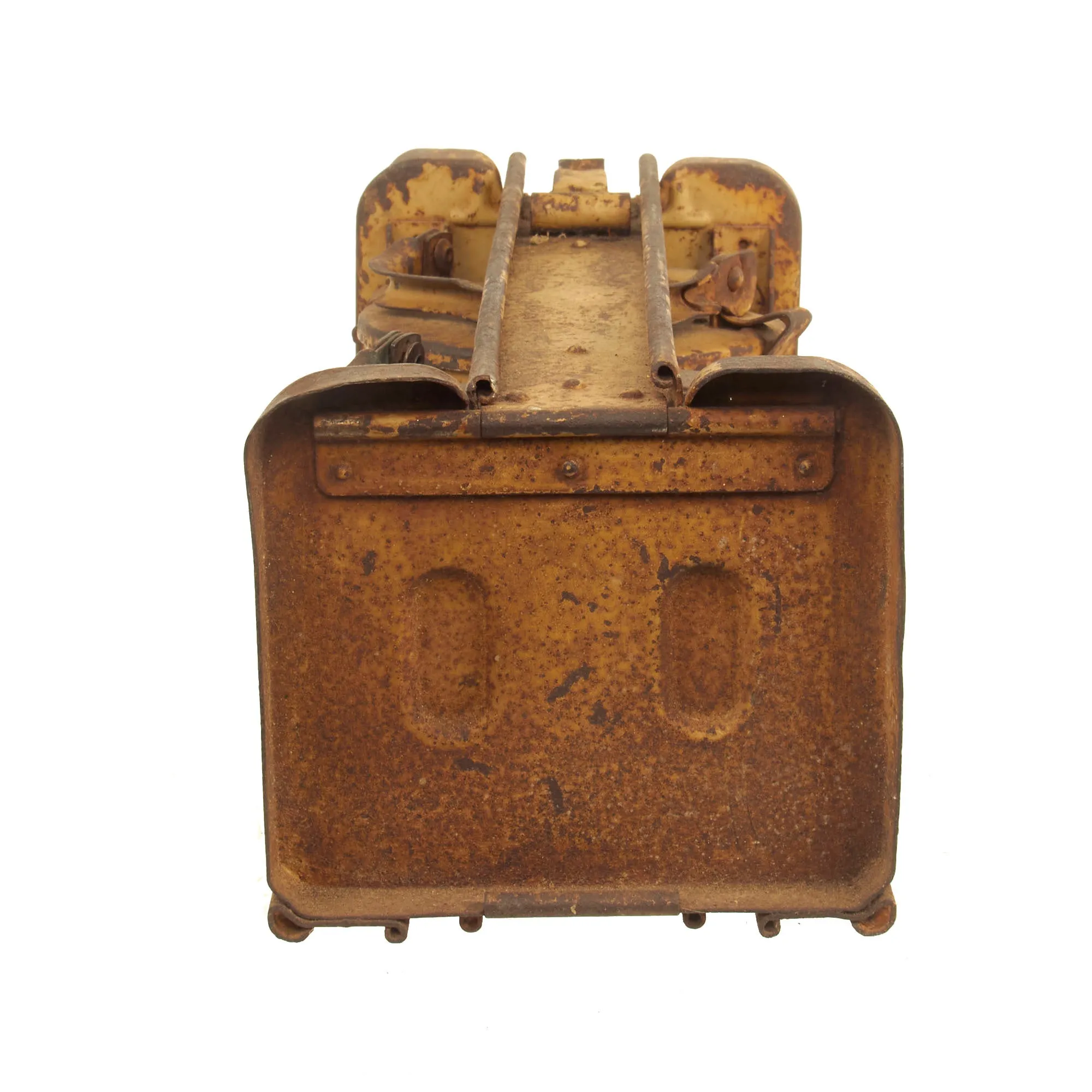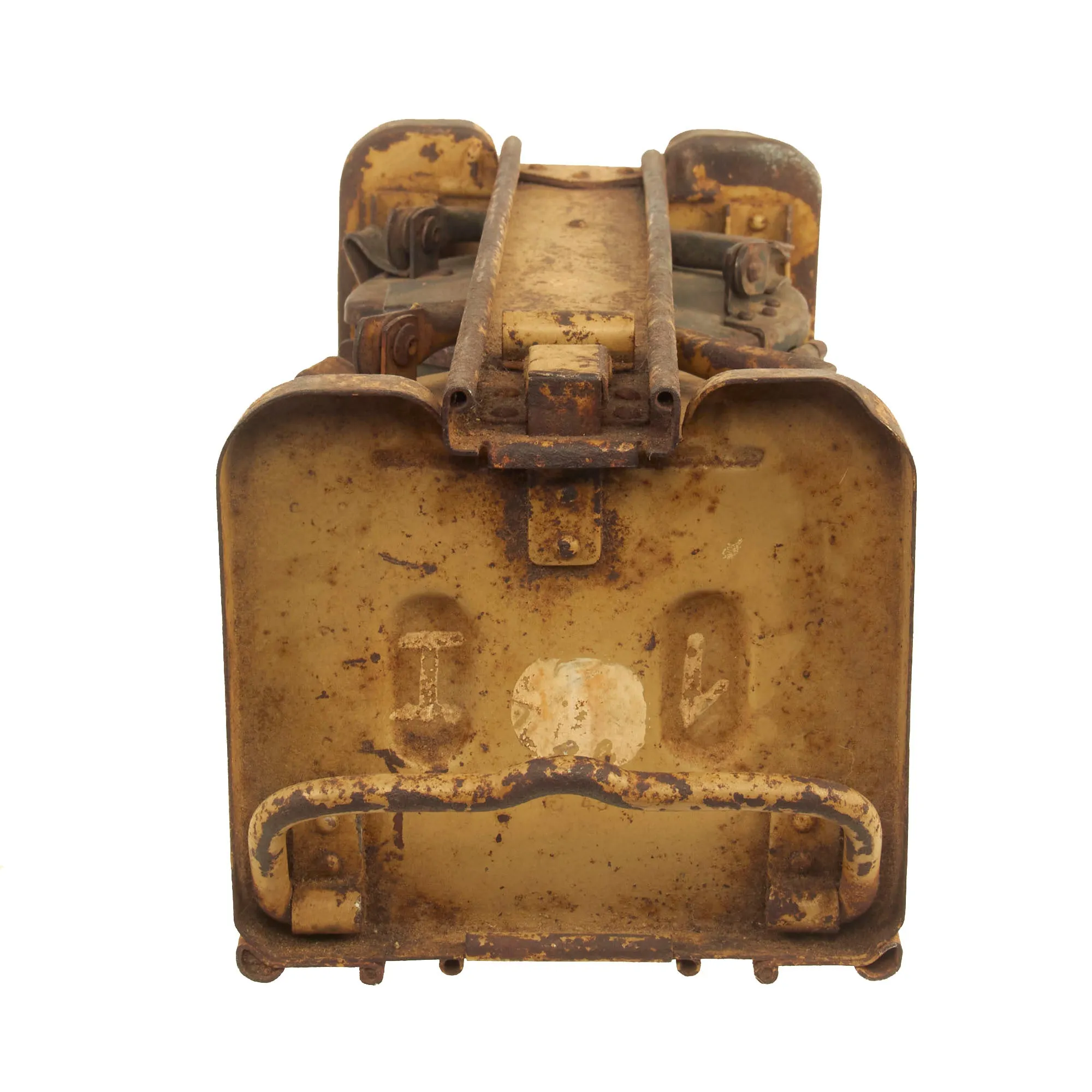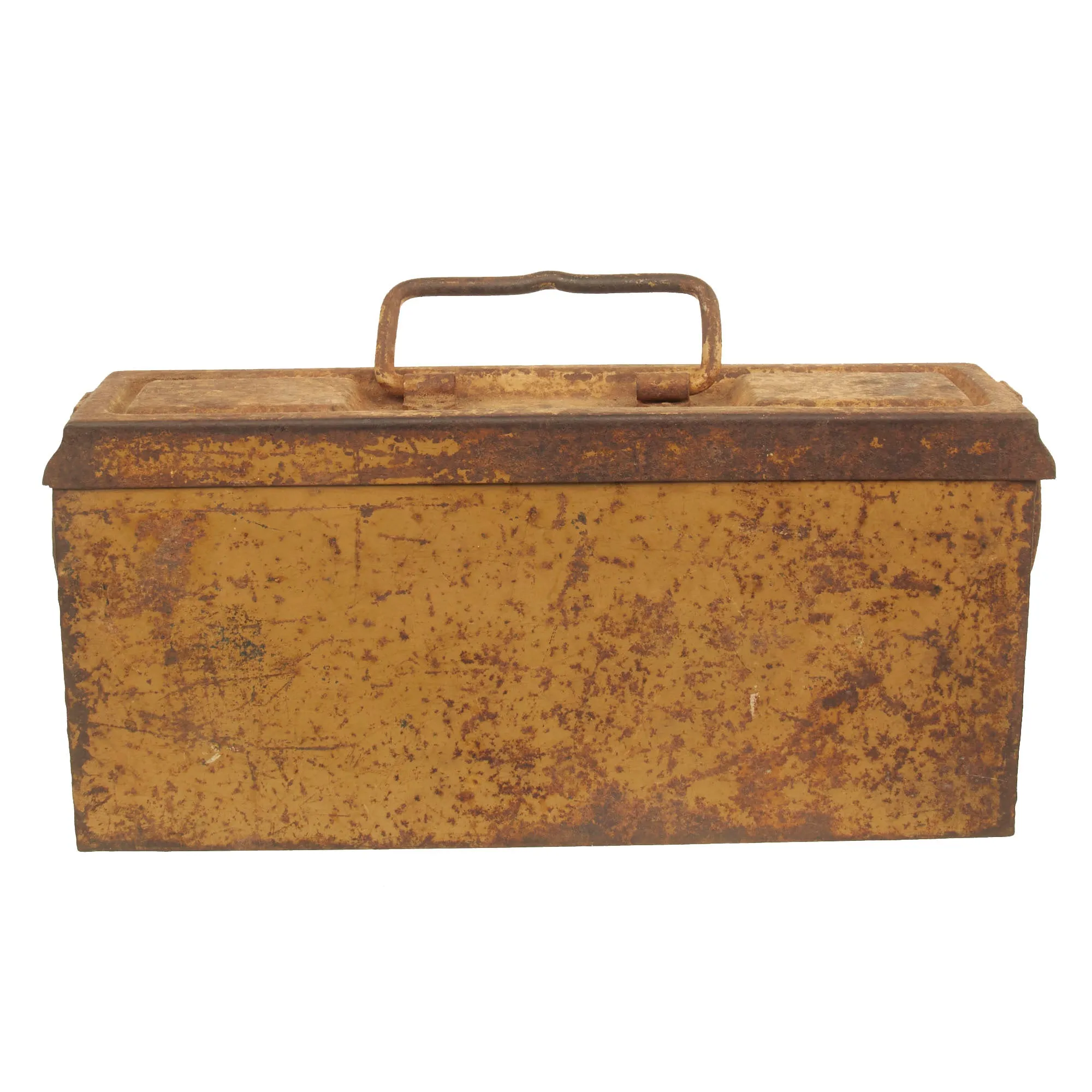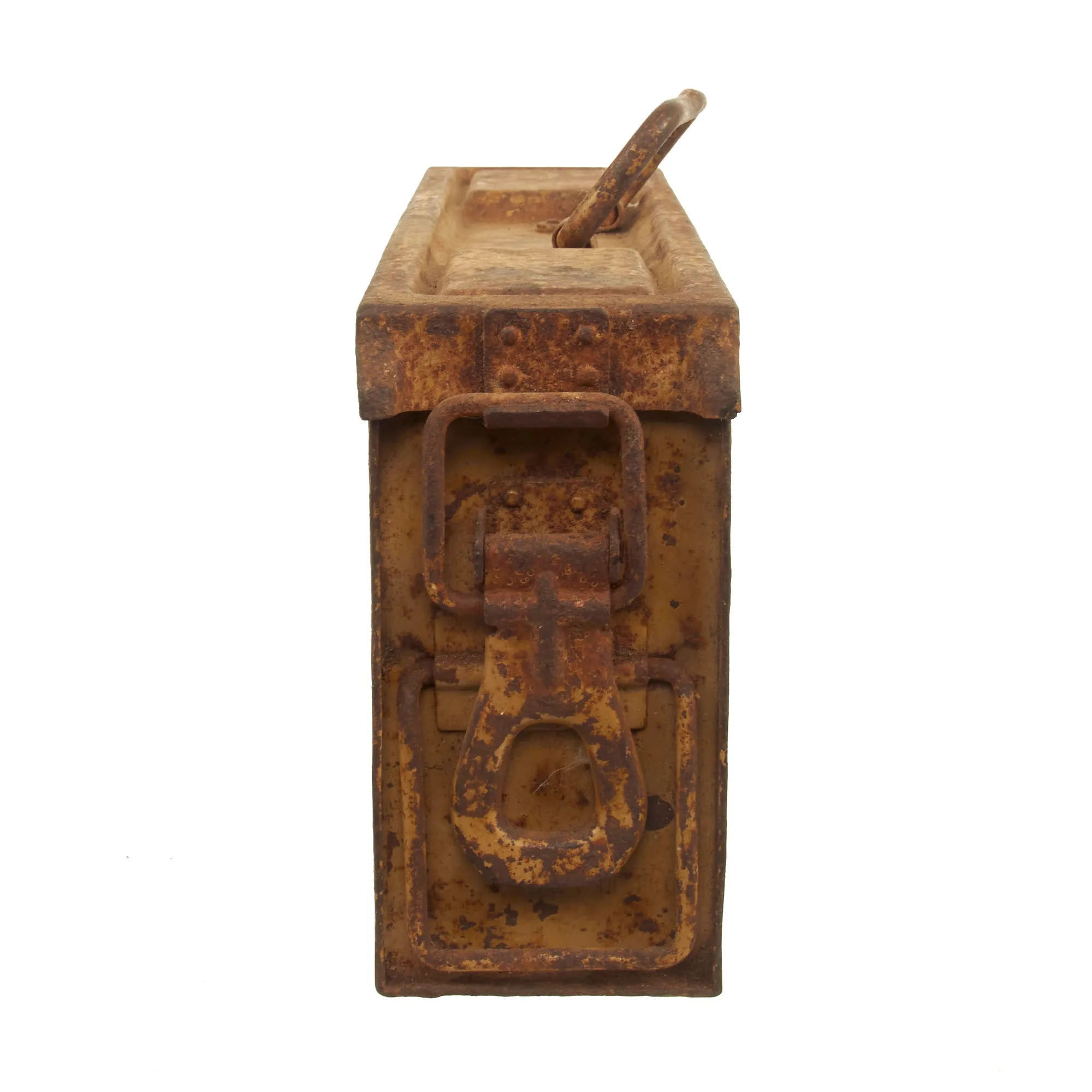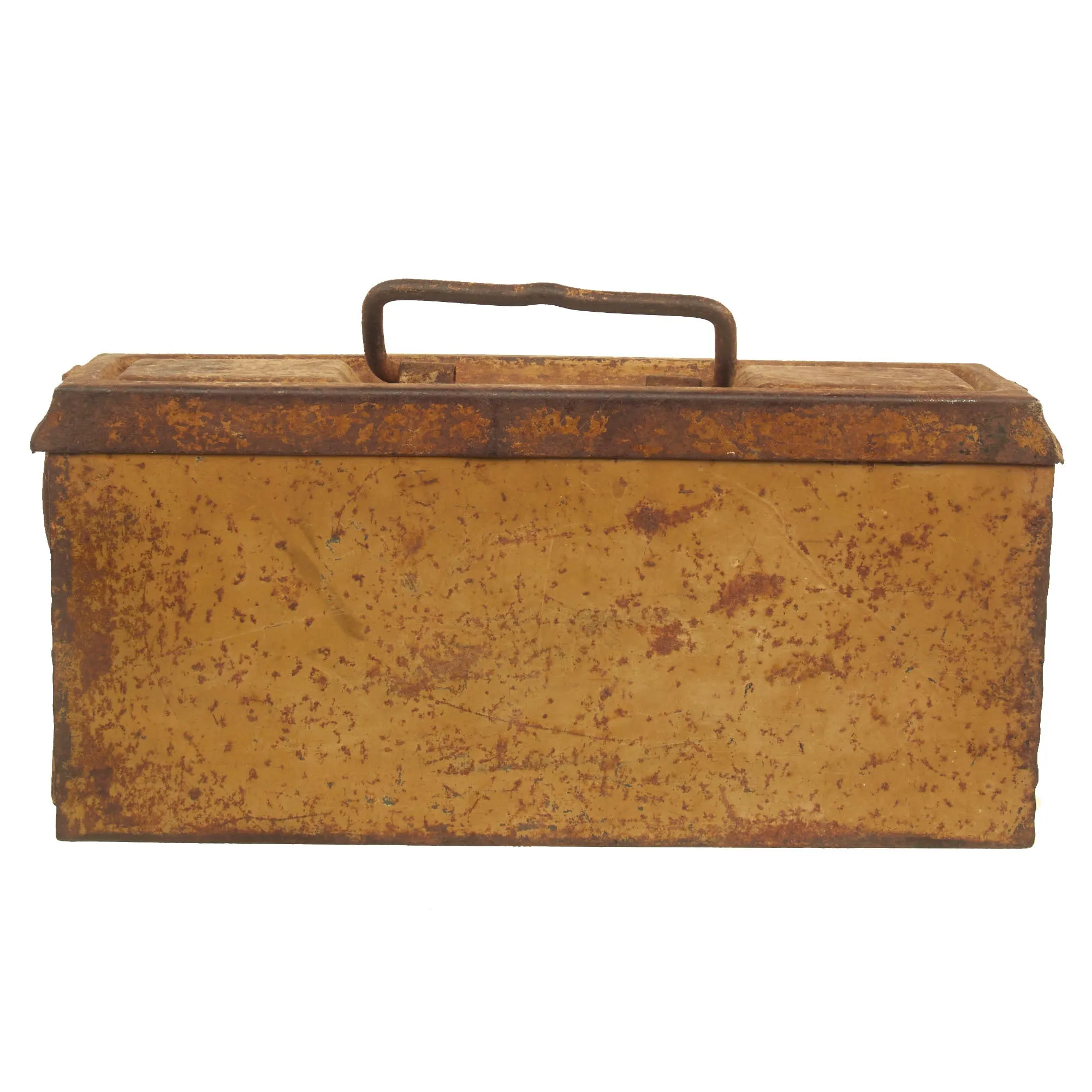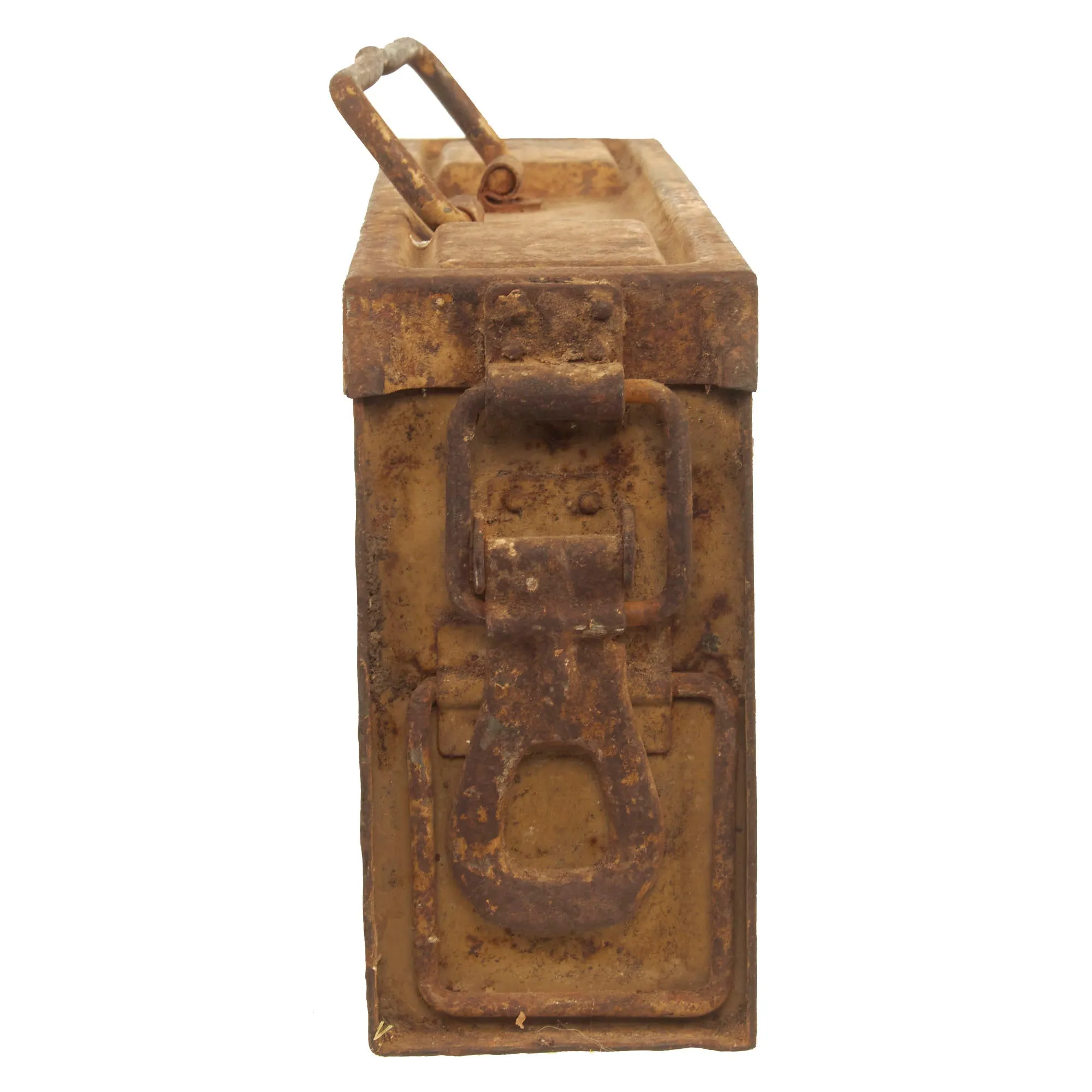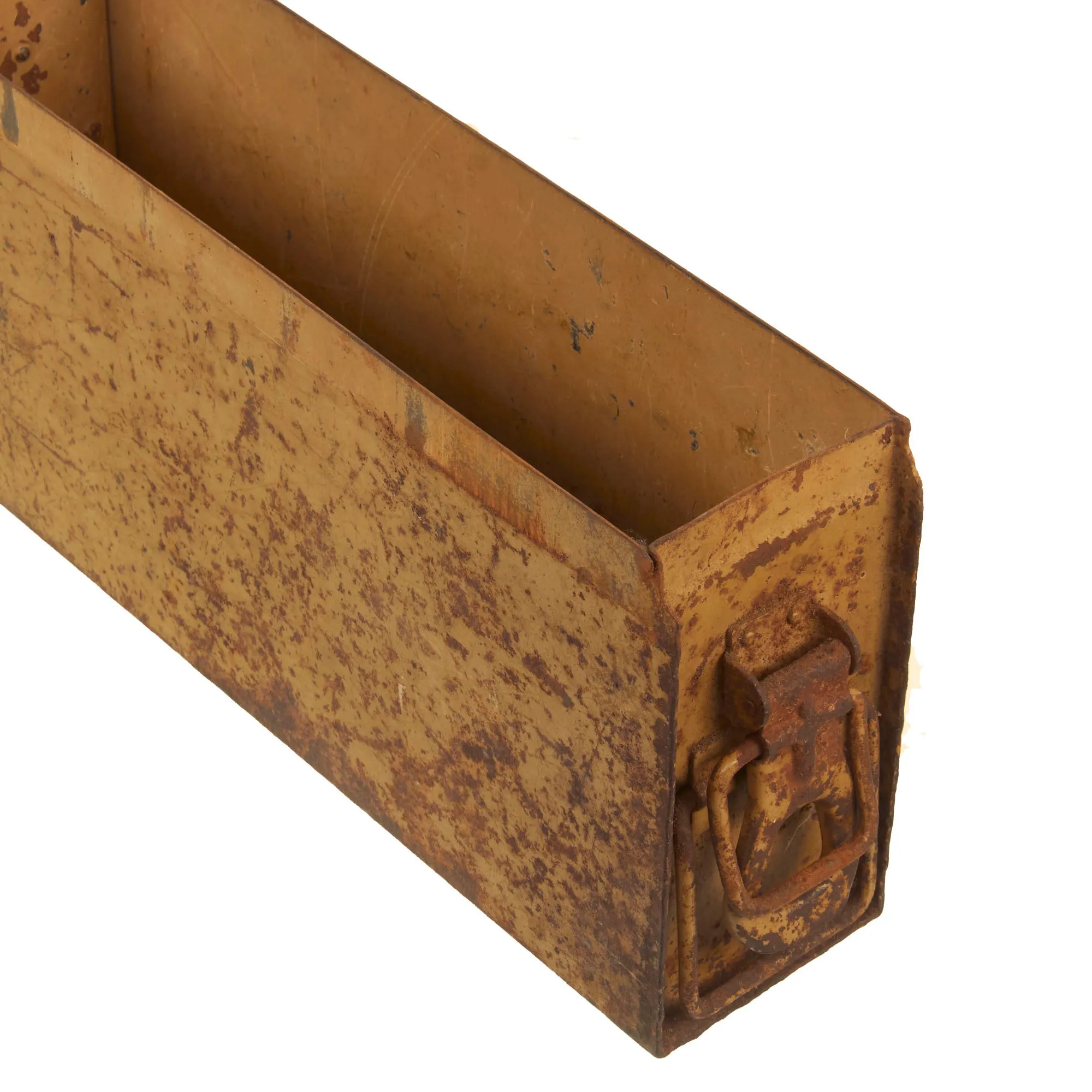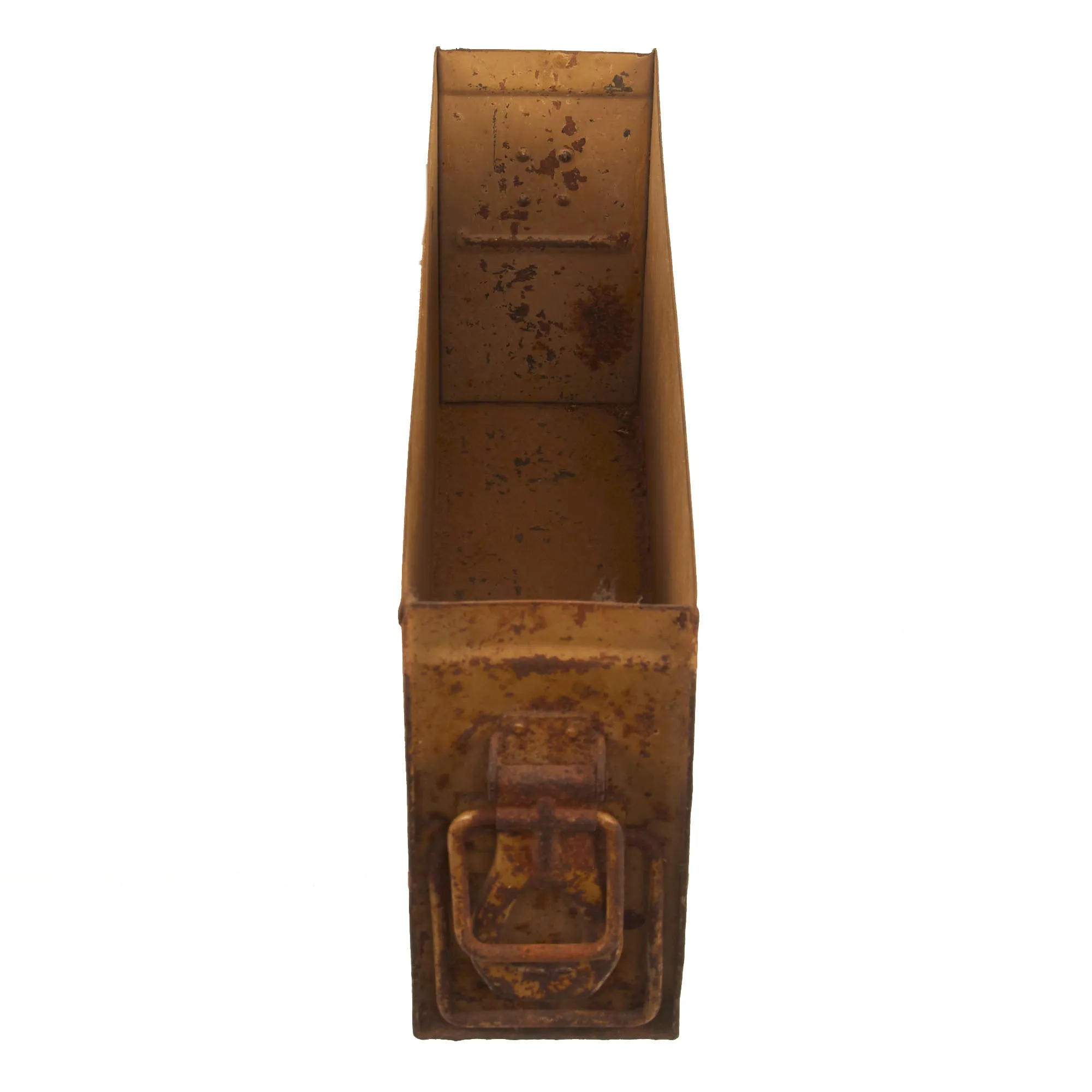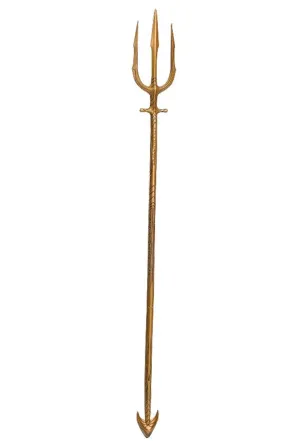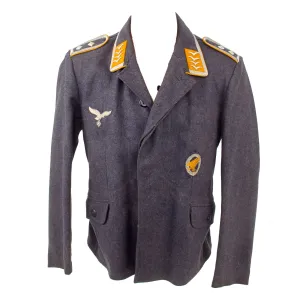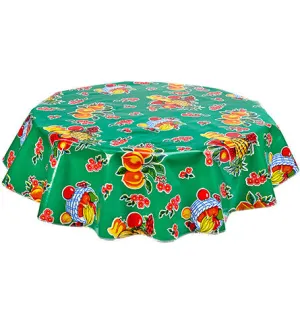Original Item: Only One Available. This is a fantastic and rare set of MG34/42 Basket Belt Carrier with drums and ammunition can, all in the desirable tan desert paint. During World War II, the MG 34 was superseded (although it remained in combat use) by a new GPMG - the MG 42. The MG 42 was more efficient to manufacture and more robust, and had a blistering 1,200rpm rate of fire. Both used the same types of drum magazines as well as ammunition cans.
This entire set is in fantastic condition and retains nearly all of the original period applied desert tan paint meant to be used as camouflage. The desert is a vast barren wasteland predominantly filled with shades of brown and tan. Due to the standard colors of black/dark gray, the DAK needed a method to better conceal their equipment, the best, easiest and most efficient way was painting them in the same colors that surrounded them. The only item that is not in tan is one of the belt drums.
An incredible set that comes more than ready for further research and display.
The Afrika Korps formed on 11 January 1941 and one of Adolf H's favorite generals, Erwin Rommel, was designated as commander on 11 February. Originally Hans von Funck was to have commanded it, but AH loathed von Funck, as he had been a personal staff officer of Werner von Fritsch until von Fritsch was dismissed in 1938.
The German Armed Forces High Command (Oberkommando der Wehrmacht, OKW) had decided to send a "blocking force" to Italian Libya to support the Italian army. The Italian 10th Army had been routed by the British Commonwealth Western Desert Force in Operation Compass (9 December 1940 – 9 February 1941) and captured at the Battle of Beda Fomm. The German blocking force, commanded by Rommel, at first consisted of a force based only on Panzer Regiment 5, which was put together from the second regiment of the 3rd Panzer Division. These elements were organized into the 5th Light Division when they arrived in Africa from 10 February – 12 March 1941. In late April and into May, the 5th Light Division was joined by elements of 15th Panzer Division, transferred from Italy. At this time, the Afrika Korps consisted of the two divisions, and was subordinated to the Italian chain of command in Africa.
On 15 August 1941, the German 5th Light Division was redesignated 21st Panzer Division, the higher formation of which was still the Afrika Korps. During the summer of 1941, the OKW increased the presence in Africa and created a new headquarters called Panzer Group Africa. On 15 August, the Panzer Group was activated with Rommel in command, and command of the Afrika Korps was turned over to Ludwig Crüwell. The Panzer Group comprised the Afrika Korps, with some additional German units now in North Africa, plus two corps of Italian units. The Panzer Group was, in turn, redesignated as Panzer Army Africa on 30 January 1942.
After the German and Italian defeat in the Second Battle of El Alamein and the Allied landings in Morocco and Algeria (Operation Torch), the OKW once more upgraded the presence in Africa by adding first the XC Army Corps, under Walter Nehring, in Tunisia on 19 November 1942, then an additional 5th Panzer Army on 8 December, under the command of Colonel-General Hans-Jürgen von Arnim.
On 23 February 1943, the original Panzer Army Africa, which had since been re-styled as the German-Italian Panzer Army, was now redesignated as the Italian 1st Army and put under the command of Italian general Giovanni Messe. Rommel, meanwhile, was placed in command of a new Army Group Africa, created to control both the Italian 1st Army and the 5th Panzer Army. The remnants of the Afrika Korps and surviving units of the 1st Italian Army retreated into Tunisia. Command of the Army Group was turned over to Arnim in March. On 13 May, the Afrika Korps surrendered, along with all other remaining Axis forces in North Africa.
Most Afrika Korps prisoners of war (POW) were transported to the United States and held in Camp Shelby in Mississippi, Camp Hearne in Texas and other POW camps until the end of the war.




